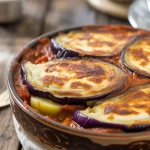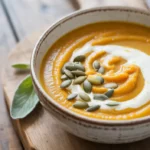There’s something truly magical about transforming a handful of simple ingredients into a loaf of Tsoureki, a beautifully braided bread that’s as rich in flavor as it is in tradition. This recipe has a delightful twist of aromatic mahleb and mastiha, making each bite a journey in itself. Let’s dive into the art of crafting this irresistible bread, perfect for sharing with good company and savoring with every slice.
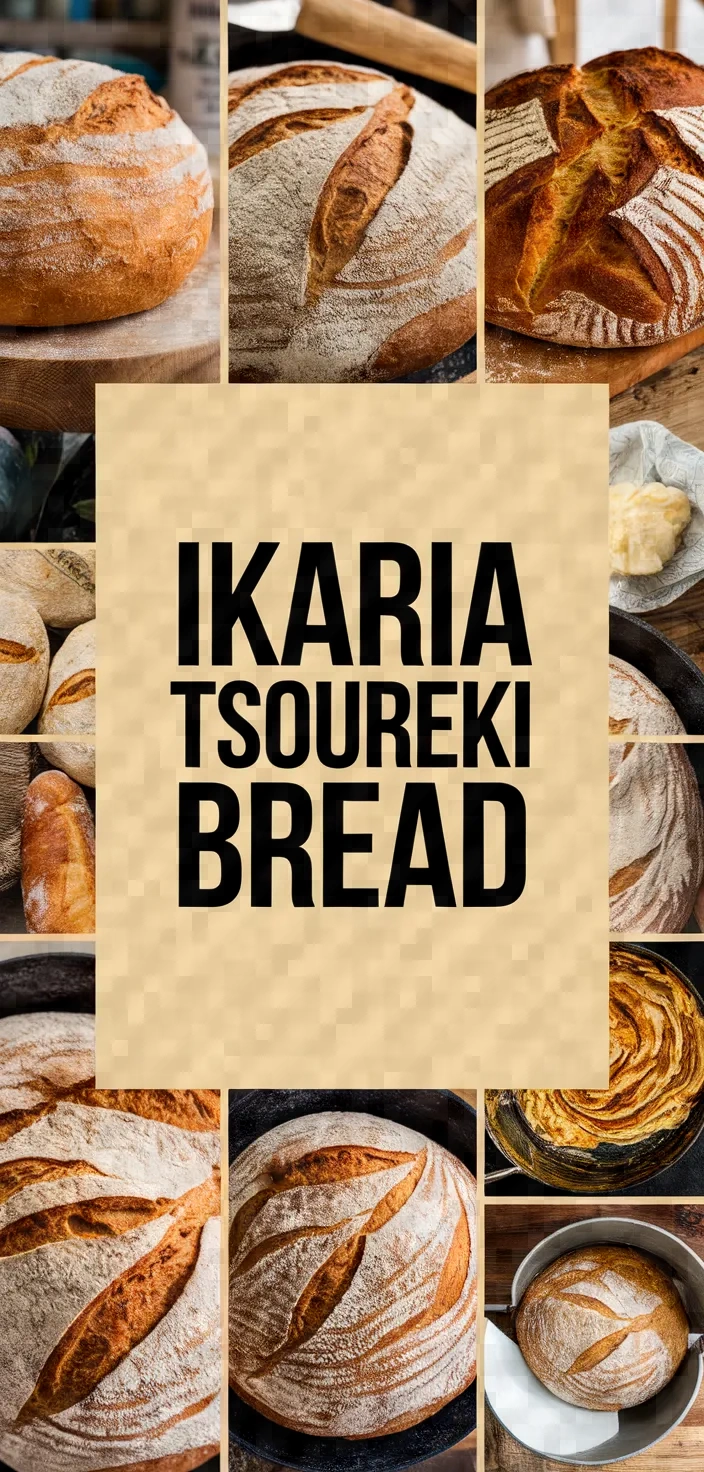
I adore crafting the addictive, aromatic Greek Easter bread known as Tsoureki—a perfect way to celebrate any springtime holiday, especially Easter. My recipe uses ground mahleb and mastiha, which add an intensified flavor to the sweet dough.
With a touch of orange zest, mastiha, and ground mahleb, I find it irresistible. Perfectly balanced, it’s enriched with 3 large eggs and melted butter in the sweet dough, providing warmth and richness.
Ikaria Tsoureki Greek Easter Bread Recipe Ingredients
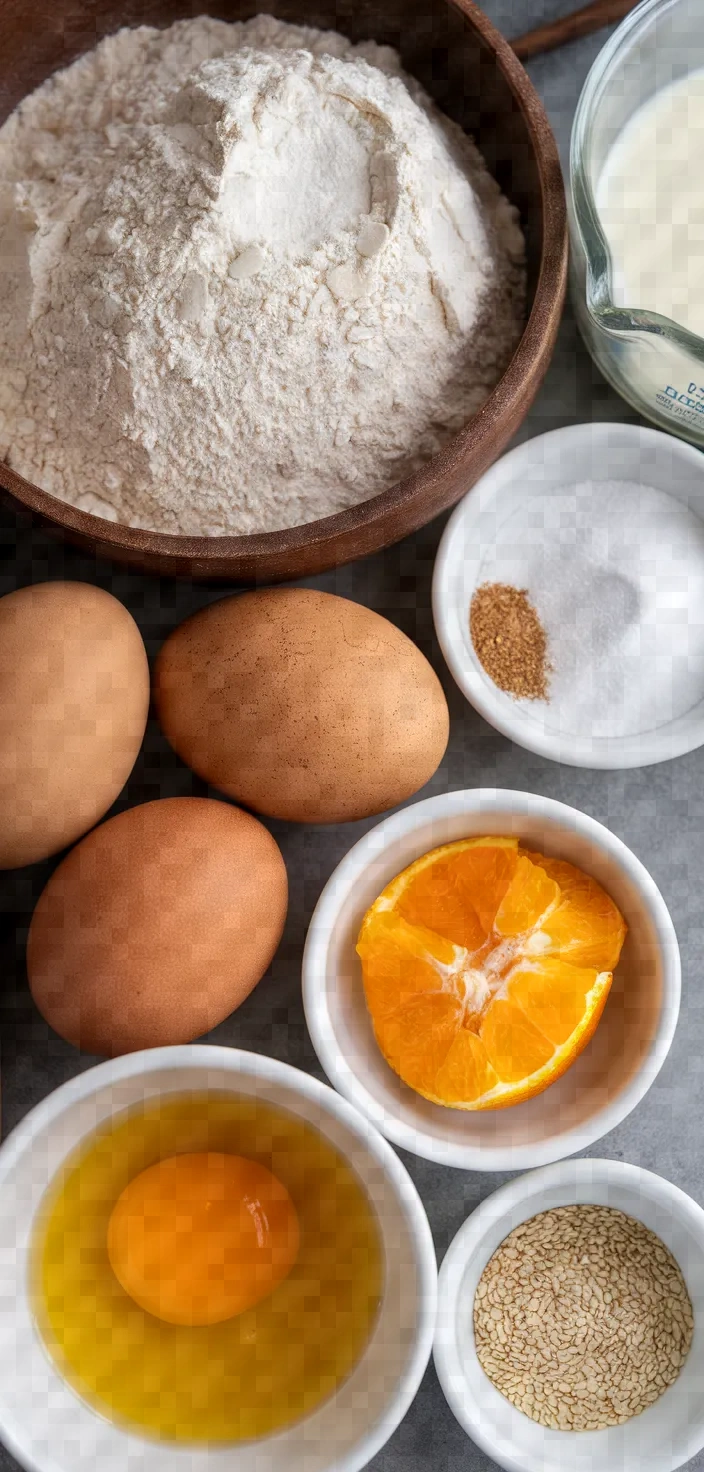
- All-purpose flour: Provides structure; rich in carbohydrates.
- Sugar: Adds sweetness; source of quick energy.
- Active dry yeast: Leavening agent; promotes bread rising.
- Mahleb: Offers nutty, cherry-like flavor; traditional spice.
- Mastiha: Unique aromatic; imparts resinous flavor.
- Milk: Adds moisture; contains protein and calcium.
- Butter: Adds richness; contains healthy fats.
- Eggs: Provide moisture; contribute to rise and texture.
- Orange zest: Adds citrus aroma; enhances flavor complexity.
Ikaria Tsoureki Greek Easter Bread Recipe Ingredient Quantities
- 4 cups all-purpose flour
- 1 cup sugar
- 1 tablespoon active dry yeast
- 1 teaspoon ground mahleb
- 1/2 teaspoon mastiha, ground
- 1/4 teaspoon salt
- 3/4 cup milk, warmed
- 1/2 cup unsalted butter, melted
- 3 large eggs, at room temperature
- 1 teaspoon vanilla extract
- Zest of 1 orange
- 1 egg, beaten (for egg wash)
- Sliced almonds (optional, for topping)
- Sesame seeds (optional, for topping)
How to Make this Ikaria Tsoureki Greek Easter Bread Recipe
1. In a big mixing bowl, blend together the plain flour, sugar, active dry yeast, ground mahleb, ground mastiha, and salt. Mix thoroughly to distribute the ingredients evenly.
2. In a slow and steady manner, pour the warmed milk and the melted butter into the bowl with the dry mixture. Using a wooden spoon, stir until everything is just combined. If you were to overmix now, you’d end up with something akin to a muffin. These loaves don’t require such vigorous (and tedious) mixing.
3. In another bowl, whisk together the 3 large eggs, the vanilla extract, and the orange zest. Add this combination to the mixture that is now a dough and mix until everything is incorporated.
4. Work the dough on a surface very lightly dusted with flour for about 10 minutes, or until it looks and feels like dough should: smooth, elastic, and just a little bit resilient. If at any point you feel it necessary, add a bit more flour to achieve the right texture.
5. Put the dough in a bowl that has been lightly greased. Cover it with a clean towel, and put the bowl where it’s warm and free of drafts. Let it rise for about
1.5 to 2 hours. You want the dough to have doubled in size when you check on it next.
6. After it has risen, deflate the dough by giving it a good punch, then cut it into three equal pieces. Roll each piece into a 16-inch-long rope.
7. The three ropes must be plaited together to form a loaf. The braided loaf must then be placed on a baking sheet that is lined with parchment.
8. Let the dough for the loaf rise a second time, covered with a towel, until it is puffy—30 to 45 minutes. The testo of the loaf will rise, too, inordinately, if you allow the second rise to extend much beyond 45 minutes.
9. Set your oven to 350 °F (175 °C) to preheat. Use a brush to cover the loaf in the egg; this will make it shiny and beautiful once it’s done baking. If you’d like, you can make the top even prettier by sprinkling it with slivered almonds or sesame seeds.
10. Bake for 25-30 minutes, or until the bread turns a golden brown and you can tap on the bottom and hear it sound hollow. Let it cool on a wire rack, and then slice. Enjoy your Tsoureki in the company of family and friends.
Ikaria Tsoureki Greek Easter Bread Recipe Equipment Needed
1. Large mixing bowl
2. Wooden spoon
3. Whisk
4. Additional bowl
5. Clean towel
6. Measuring cups and spoons
7. Surface for kneading
8. Dough scraper or knife
9. Baking sheet
10. Parchment paper
11. Pastry brush
12. Oven
13. Cooling rack
FAQ
- What is mahleb and where can I find it?Mahleb is a spice derived from the seeds of a specific type of cherry stone. It possesses a flavor profile that is nutty and slightly sweet. It is something that you can find in the grocery stores of either your typical Middle Eastern or Greek community.
- Can I substitute mastiha in the recipe?Mastiha, or mastic, is a resin that has a distinct taste. If you cannot get your hands on it, you can leave it out, but this will change the flavor of the bread from traditional to something else.
- Can I make the dough ahead of time?Absolutely, you have the option of preparing your dough, allowing it to rise, and then placing it in the refrigerator to chill overnight. Allow it to return to room temperature before you shape and bake it the following day.
- How should I store Ikaria Tsoureki?Keep the bread in an airtight container at room temperature for no more than 3 days. If you want to save it for a longer time, place it in the freezer. It can remain there for about 2 months.
- What can I use if I don’t have an orange for zest?One alternative is lemon zest, though using it will slightly alter the citrus note of the bread.
- Do I have to use an egg wash?An egg wash results in a shiny and golden crust and is good for helping toppings stick to the bread. It is recommended but not required.
- Can I use a different flour than all-purpose?This recipe calls for all-purpose flour, which is perfect for achieving the right texture. You can use bread flour if you prefer a slightly chewier crust.
Ikaria Tsoureki Greek Easter Bread Recipe Substitutions and Variations
Replace 1 cup of sugar with 1 cup of honey or 1 cup of coconut sugar.
1 tablespoon instant yeast = 1 tablespoon active dry yeast
1 teaspoon ground cardamom = 1 teaspoon ground mahleb
1/2 teaspoon anise seed, ground
for
1/2 teaspoon mastiha, ground
3/4 cup warm almond milk
3/4 cup warm milk
1/2 cup melted coconut oil, 1/2 cup melted unsalted butter
1 teaspoon vanilla extract for 1 teaspoon almond extract
Pro Tips
1. Proof the Yeast To ensure your yeast is active, consider proofing it before adding it to the flour mixture. Mix the yeast with the warmed milk and a teaspoon of sugar, letting it sit for about 5-10 minutes until frothy. This step will guarantee a good rise in your dough.
2. Temperature Control Keep your ingredients at the proper temperature. Eggs should be at room temperature, and milk should be warm—not hot—to avoid killing the yeast. This helps the dough rise properly and ensures a light, airy texture.
3. Kneading Tips While kneading, use the “windowpane test” to check if your dough is ready. Stretch a small piece of the dough gently between your fingers; it should stretch thin enough to let light through without breaking. This indicates good gluten development.
4. First Rise Environment To create the optimal condition for the first rise, place the bowl in a slightly warm oven. Turn the oven on to a low temperature (around 100°F/38°C) for a few minutes, then turn it off and place the covered dough inside with the door slightly ajar to let it rise without drafts.
5. Avoid Overcrowding If baking multiple loaves at once, ensure there is enough space between them on the baking sheet for even heat distribution. This prevents the loaves from sticking together and ensures even baking throughout.
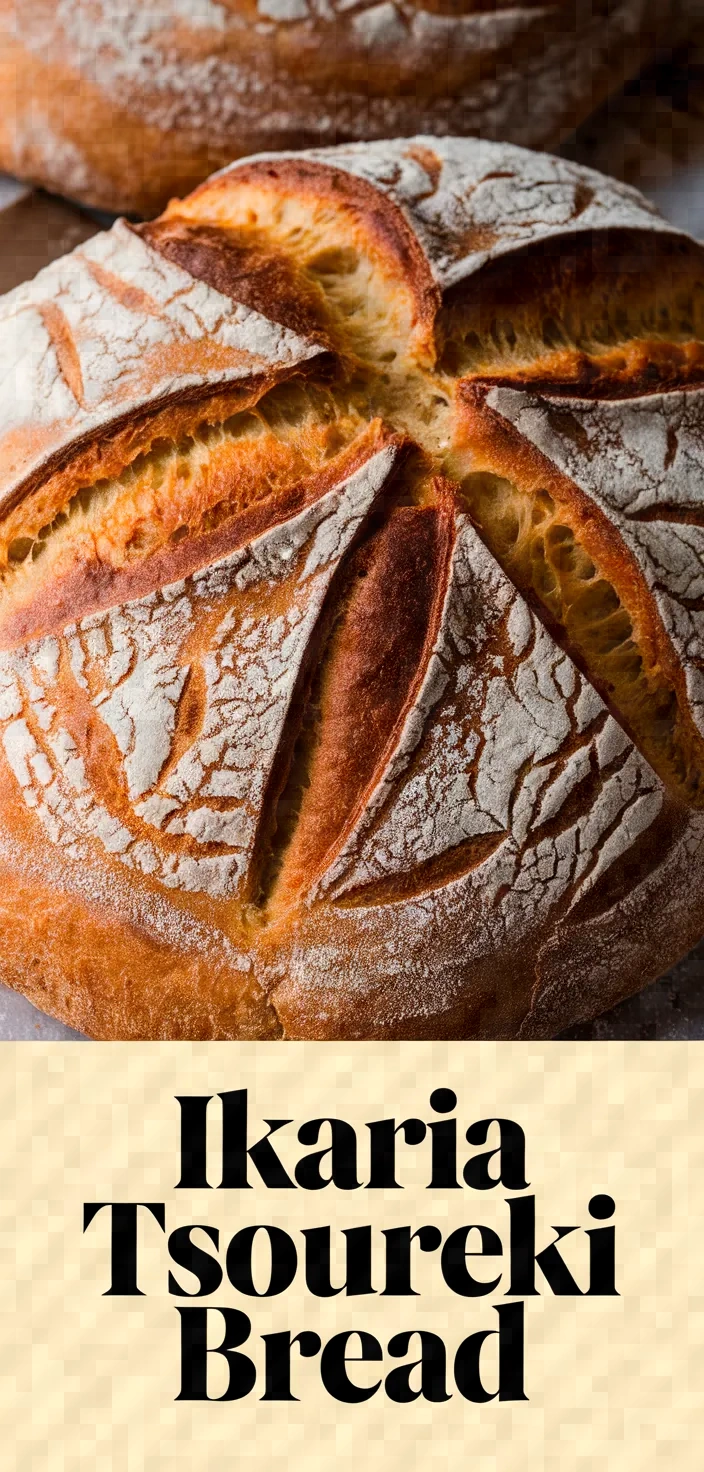
Ikaria Tsoureki Greek Easter Bread Recipe
My favorite Ikaria Tsoureki Greek Easter Bread Recipe
Equipment Needed:
1. Large mixing bowl
2. Wooden spoon
3. Whisk
4. Additional bowl
5. Clean towel
6. Measuring cups and spoons
7. Surface for kneading
8. Dough scraper or knife
9. Baking sheet
10. Parchment paper
11. Pastry brush
12. Oven
13. Cooling rack
Ingredients:
- 4 cups all-purpose flour
- 1 cup sugar
- 1 tablespoon active dry yeast
- 1 teaspoon ground mahleb
- 1/2 teaspoon mastiha, ground
- 1/4 teaspoon salt
- 3/4 cup milk, warmed
- 1/2 cup unsalted butter, melted
- 3 large eggs, at room temperature
- 1 teaspoon vanilla extract
- Zest of 1 orange
- 1 egg, beaten (for egg wash)
- Sliced almonds (optional, for topping)
- Sesame seeds (optional, for topping)
Instructions:
1. In a big mixing bowl, blend together the plain flour, sugar, active dry yeast, ground mahleb, ground mastiha, and salt. Mix thoroughly to distribute the ingredients evenly.
2. In a slow and steady manner, pour the warmed milk and the melted butter into the bowl with the dry mixture. Using a wooden spoon, stir until everything is just combined. If you were to overmix now, you’d end up with something akin to a muffin. These loaves don’t require such vigorous (and tedious) mixing.
3. In another bowl, whisk together the 3 large eggs, the vanilla extract, and the orange zest. Add this combination to the mixture that is now a dough and mix until everything is incorporated.
4. Work the dough on a surface very lightly dusted with flour for about 10 minutes, or until it looks and feels like dough should: smooth, elastic, and just a little bit resilient. If at any point you feel it necessary, add a bit more flour to achieve the right texture.
5. Put the dough in a bowl that has been lightly greased. Cover it with a clean towel, and put the bowl where it’s warm and free of drafts. Let it rise for about
1.5 to 2 hours. You want the dough to have doubled in size when you check on it next.
6. After it has risen, deflate the dough by giving it a good punch, then cut it into three equal pieces. Roll each piece into a 16-inch-long rope.
7. The three ropes must be plaited together to form a loaf. The braided loaf must then be placed on a baking sheet that is lined with parchment.
8. Let the dough for the loaf rise a second time, covered with a towel, until it is puffy—30 to 45 minutes. The testo of the loaf will rise, too, inordinately, if you allow the second rise to extend much beyond 45 minutes.
9. Set your oven to 350 °F (175 °C) to preheat. Use a brush to cover the loaf in the egg; this will make it shiny and beautiful once it’s done baking. If you’d like, you can make the top even prettier by sprinkling it with slivered almonds or sesame seeds.
10. Bake for 25-30 minutes, or until the bread turns a golden brown and you can tap on the bottom and hear it sound hollow. Let it cool on a wire rack, and then slice. Enjoy your Tsoureki in the company of family and friends.








